Respiration: a guide to the latest equipment
In this issue of Infant we examine recent innovations in medical equipment to support newborn respiration, in particular neonatal ventilators and apnoea monitors.
EVE-nEO with EasyFlow for neonates
The EVE-nEO ventilator has been designed by Fritz Stephan GmbH specifically for ‘little patients’ and is intended to be one of the most technologically advanced intensive care ventilators available. It has an inbuilt air turbine and eight hours of continuous battery operation, making it truly portable and therefore suited to the NICU and for use in transfers/transport.
EVE-nEO combines critical care features with ease of operator use and safety. Its patient menu lets the user rapidly start or switch between preferred ventilation settings for the preterm neonate, infant/paediatric and large child. There are invasive and non-invasive lung protective ventilation modes, including CPAP and DuoPAP. Features include electronic oxygen mixing (20-100%), high-flow oxygen and a 21.3cm full colour interactive touchscreen.
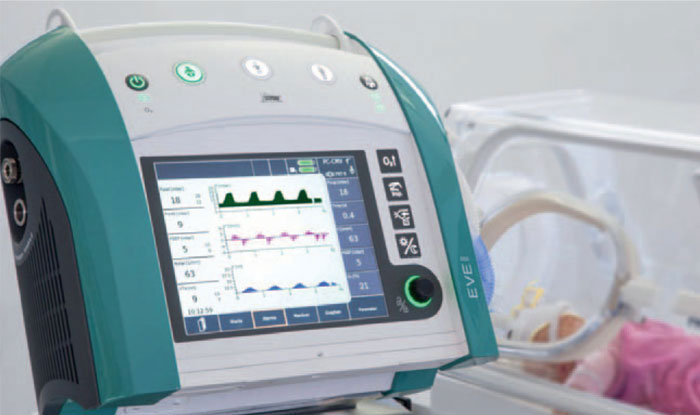
The EVE-nEO ventilator.
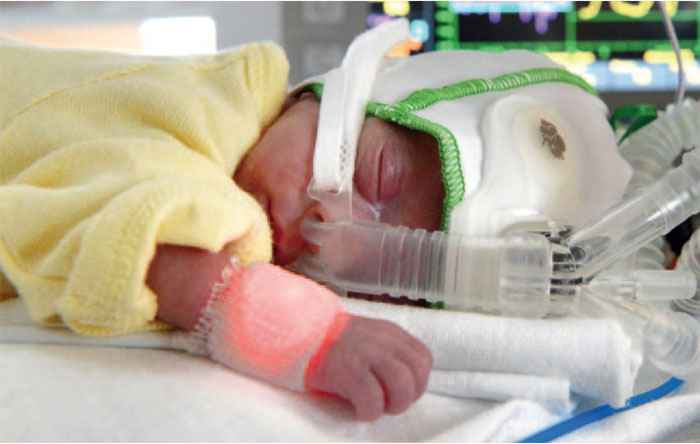
Neonatal ventilation using the EasyFlow system.
For optimal neonatal ventilation it is essential to have advanced technology that meets the specific requirements of premature and newborn infants. Likewise, the accessories must suit the patients’ small size and changing growth, fit snugly and be easy to use. Stephan has developed the new EasyFlow system specifically for neonates. With EasyFlow, the prongs and masks are available in various sizes and adjust to fit the anatomy of premature and newborn babies to provide gentle, non-invasive ventilation. The EasyFlow system integrates with Stephan’s EVE-nEO Sophie and Stephanie neonatal ventilators.
Stephan ventilators and EasyFlow are available from Medacx Limited.
OxyGenie on the SLE6000: responding automatically to SpO2 fluctuations
In 2016, SLE launched its first modular ventilator, the SLE6000. The modular system allowed clinicians to customise the ventilator around the needs of their patients. Along with its core ventilation modes like CPAP, patient triggered ventilation (PTV) and synchronised intermittent mandatory ventilation (SIMV), additional software modules such as etCO2 and SpO2 have been incorporated into the SLE6000. However, the company says that the most exciting additional software module is OxyGenie, SLE’s automated oxygen control technology.
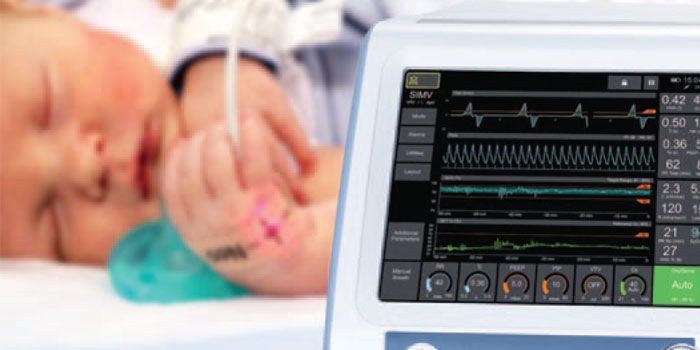
The SLE6000 infant ventilator with OxyGenie.
Developed at the University of Tasmania in collaboration with the Royal Hobart Hospital, Australia, the OxyGenie software module uses a ‘proportional integral derivative’ algorithm, which makes it highly responsive to SpO2 deviations. This allows it to recognise any deviation outside the set SpO2 target range or an episode of serious instability, and safely and quickly counteract it. By adjusting as frequently as every second, OxyGenie uses a series of algorithms that can continuously adjust the FiO2 to keep the SpO2 within target range. This results in not only a 25% increase in time spent in target range, but also virtually eliminates prolonged periods of hyperoxia and hypoxia.
The use of automatic control reduces the rate of interaction with the ventilator from clinical staff, allowing them to spend more time caring for the patient.
By continuously and non-invasively monitoring the blood oxygen levels via a built-in pulse oximeter, the OxyGenie software represents a step forward in the care of ventilated infants, providing responsive, accurate and effective automated oxygen delivery. According to SLE, its technology provides a smooth and effective response to sudden and gradual fluctuations in SpO2 and can maintain accuracy even in the most challenging circumstances.
Automation of oxygen delivery using Vapotherm’s Oxygen Assist Module
Vapotherm’s Hi-VNI Technology is mask-free, non-invasive ventilation for spontaneously breathing patients and a tool for relieving respiratory distress, including hypercapnia, hypoxaemia and dyspnoea. For neonates, Vapotherm’s Precision Flow system with Hi-VNI is a clinically proven, gentler alternative to nCPAP (nasal continuous positive airway pressure) and nasal intermittent positive pressure ventilation (NiPPV) for primary respiratory support.1 It allows for precise control of FiO2 delivery and facilitates kangaroo care without the need for bulky interfaces.
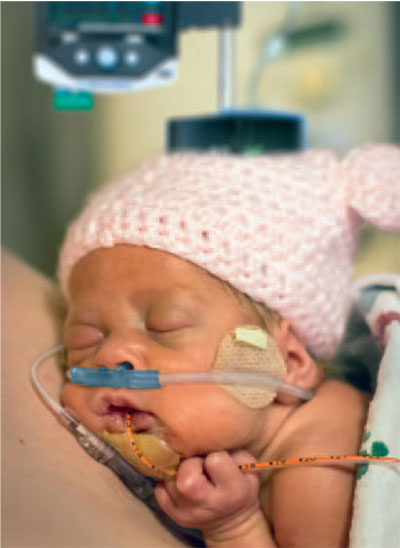
Kangaroo care using the Vapotherm Precision Flow system with OAM.
Vapotherm has now developed and launched a new automated closed loop oxygen delivery solution called the Oxygen Assist Module (OAM). The OAM integrates with Precision Flow using pulse oximetry to monitor blood oxygen saturation and then automatically adjusting inspired oxygen concentration settings to maintain SpO2 within a range set by the clinician. It utilises a unique proprietary software algorithm designed to function with current Hi-VNI technology.
Maintaining blood oxygen saturation within prescribed ranges can be a time-consuming challenge but is crucial in preventing the consequences of too much or too little oxygen such as retinopathy of prematurity, lung damage, necrotising enterocolitis, neurodevelopmental impairment, or death. “Oxygen is a deadly, dangerous, life-giving drug with a narrow therapeutic index, and it can be especially dangerous for babies,” says Joe Army, President and CEO of Vapotherm. “Too much or too little oxygen can lead to serious consequences. We are very proud to be able to offer clinicians a new tool in helping to maintain appropriate clinical oxygen levels in babies.”
The Vapotherm OAM allows clinicians to better achieve a selected SpO2 target and studies have shown it can maintain a baby’s SpO2 in the target range more effectively than manual control, reducing the duration of hypoxic and hyperoxic episodes.2 Not only this, but as fewer manual adjustments of FiO2 are required, NICU staff can spend more time focusing on other clinical duties.
References
- Lavizarri A, et al. Heated, humidified high-flow nasal cannula vs nasal continuous positive airway pressure for respiratory distress syndrome of prematurity – a randomized clinical noninferiority trial. JAMA Pediatr 2016; doi:10.1001/jamapediatrics.2016.1243.
- Reynolds PR, et al. Randomised cross-over study of automated oxygen control for preterm infants receiving nasal high flow. Arch Dis Child Fetal Neonatal Ed 2019;104:F366-71.
Dräger’s user interface design makes Babylog operation easier and more efficient
Dräger has developed an award-winning graphic operating concept that simplifies therapy management with the Babylog VN800 and VN600 neonatal ventilators. The user interface received the iF Design Award 2020 for its new menu structure, glass touchscreen and high resolution graphics, which make orientation easier and provide clearer user guidance. The user is intuitively guided through the menus with larger icons, important functions at the top menu level and a clear, colour-coordinated screen design. The lower number of colours for the screen elements and the reduced use of signal colours enable clear, smooth navigation. The bright screen background also minimises disruptive reflections of ambient light.
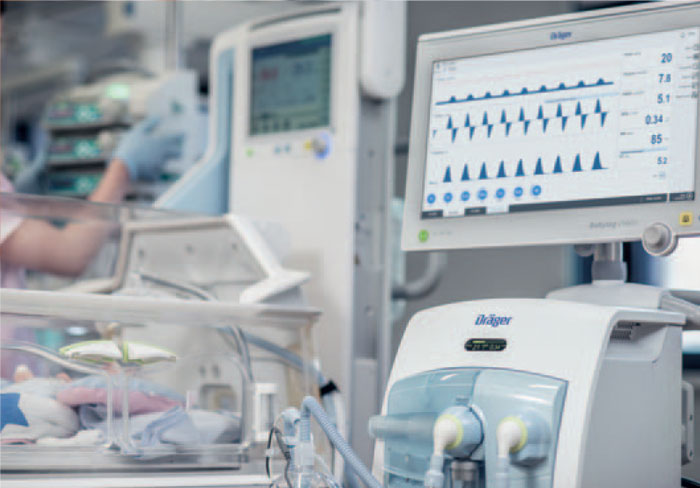
Dräger’s award-winning user interface design.
According to the iF Design Award’s jury, the new interface for the Babylog meets major user requirements regarding clarity of information, guidance and safety of use. “The simplified operation of the device supports the user in making therapeutic decisions, contributes to shorter training times, and therefore makes patient care even better and safer,” summarises Andreas Neumann, Senior Product Manager at Dräger.
It also contributes to effective infection prevention support in hospitals. To maintain infection management, medical devices must support the requirements of hygienically sensitive areas in hospitals. The new Dräger ventilators have a rounded design with fewer edges and overhangs, and have surfaces that can be effectively disinfected. The glass touchscreen on the devices – an almost ‘seamless’ screen – supports daily hygiene routines within the workplace.
Delta Medical’s RM15 enables early detection of cessation of breathing
Apnoea is a common medical issue in preterm babies caused by an underlying illness or most commonly due to idiopathic apnoea of prematurity. This can lead to additional stress for the newborn infant’s development and great anxiety for the parents. Apnoea monitoring can contribute to improved outcomes for the baby and reduced concern for parents.
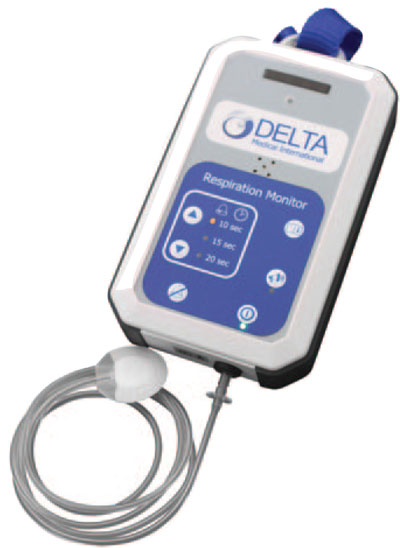
While pulse oximetry will alert nursing staff to falling oxygen saturation, early detection of the cessation of breathing allows more timely intervention. Since the Graseby MR10 apnoea monitor was withdrawn from the market some years ago many NHS neonatal units have been seeking an equivalent replacement product. Delta Medical International’s RM15 respiration monitor for neonatal apnoea detection is a simple yet reliable device that gives reassurance to nursing staff and parents. Developed using what is said to be the most widely accepted technology, the apnoea monitor works in the same way as the Graseby MR10 using identical patient sensors.
For convenience, the Delta Medical RM15 apnoea monitor has a compact ergonomic design, which is lightweight and operated using standard batteries. It uses a soft, disposable abdominal sensor for greater infection control measures and comes complete with a hanging strap so it can be secured safely to the baby’s cot or a rail. Suitable for all areas of neonatal and paediatric care, the RM15 has simple and easy to operate controls, an audible and visual apnoea detection alarm and a user selected apnoea delay period.
With final CE approval expected imminently, Delta Medical has had interest from hospitals who have already seen the monitor and have an urgent need for a simple and reliable device for monitoring apnoea in neonates and young babies.
Or read this article in our
Tablet/iPad edition


